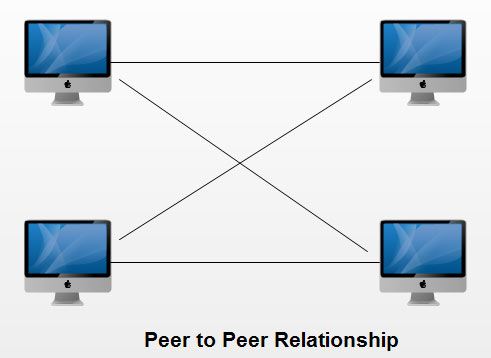- In the peer to peer computer network model we simply use the same Workgroup for all the computers and a unique name for each computer in a computer network.
- There is no master or controller or central server in this computer network and computers join hands to share files, printers and Internet access.
- It is practical for workgroups of a dozen or less computers making it common environments, where each PC acts as an independent workstation and maintaining its own security that stores data on its own disk but which can share it with all other PCs on the network.
- Software for peer-to-peer network is included with most modern desktop operating systems such as Windows and Mac OS.
- Peer to peer relationship is suitable for small networks having less than 10 computers on a single LAN.
- In a peer to peer network each computer can not act as both a server and a client.

We’ll be covering the following topics in this tutorial:
Advantages of Peer to Peer Networks
Peer to peer networks have following advantages:
1. Such networks are easy to set up and maintain as each computer manages itself.
2. It eliminates extra cost required in setting up the server.
3. Since each device is master of its own, they an: not dependent on other computers for their operations.
Disadvantages of Peer to Peer Networks
1. In peer-to-peer network, the absence of centralized server make it difficult to backup data as data is located on different workstations.
2. Security is weak as each system manages itself only.
3. There is no central point of data storage for file archiving.
 Dinesh Thakur holds an B.C.A, MCDBA, MCSD certifications. Dinesh authors the hugely popular
Dinesh Thakur holds an B.C.A, MCDBA, MCSD certifications. Dinesh authors the hugely popular